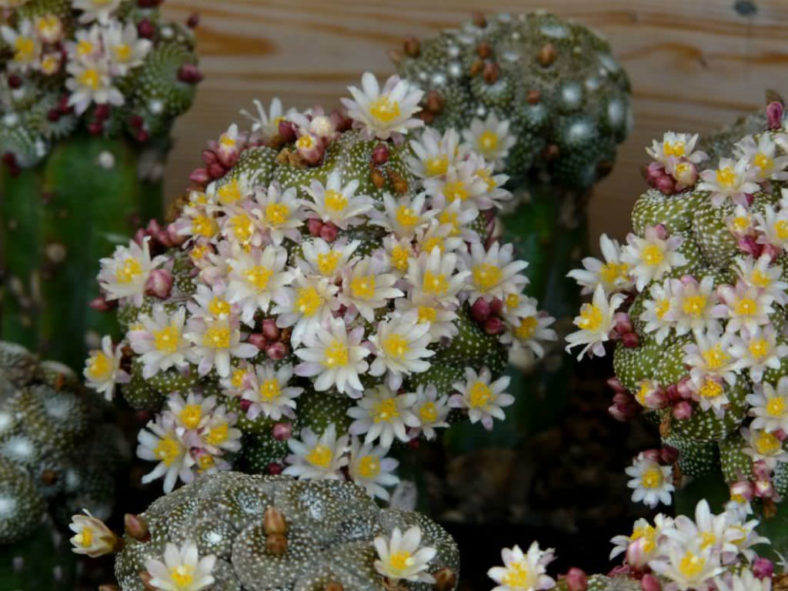Blossfeldia is a genus of the smallest cacti. Although several species have been described, most botanists agree that all described species should be classified under Blossfeldia liliputana.
Due to their slow growth rate, Blossfeldias are often grafted, which allows them to grow more quickly and produce numerous offsets. However, grafting can cause them to lose their distinctive disc-like shape, resulting in a more globular and bloated appearance. On the positive side, grafted Blossfeldias are much easier to cultivate. When grafting, it is essential to consider the minimum temperature requirements based on the rootstock used.
Growing Conditions
Light: Blossfeldias thrive in some shade with good airflow for the best appearance.
Temperature: Blossfeldias should be kept in a cool environment during winter rest. They can tolerate occasional frost if kept dry before and during cold spells, with minimal risk of damage. These cacti can withstand temperatures as low as 15 °F (-10 °C). Still, it is advisable not to expose them to temperatures below 40 °F (5 °C) in cultivation, even in well-ventilated and protected locations. It is important to note that Blossfeldias are prone to rotting during the winter resting phase if the soil remains wet.

Water: Water your Blossfeldias during the growing season, which is from spring to fall. These plants have thin, fibrous roots that can suffer from wet conditions. Water only when the soil is dry, but avoid getting water on the plants when exposed to direct sunlight. Wet plants in direct sunlight can get sunburned, leading to scars, fungal infections, and even death. Once temperatures begin to drop, keep the soil dry, and ensure it remains completely dry during winter when temperatures range from 40 to 60 °F (5 to 15 °C). It is best not to water on overcast, humid, or cold winter days.
Soil: Grow Blossfeldias in a well-draining soil mix, as they are very sensitive to root rot in wet soil and low temperatures. Allow the soil to dry out between waterings.
Fertilizer: These cacti thrive with a low-nitrogen fertilizer during spring and summer, which promotes faster growth.
Propagation
Blossfeldias are primarily propagated through seeds and grafting. The tiny seeds should be sown on the surface of a finely sifted soil mix. These plants grow very slowly, and keeping them alive on their roots for the first 4 to 6 months can be challenging. They should be carefully misted with a handheld spray bottle until they are large enough to be watered.
Pests and Problems
While various insects may be attracted, well-maintained plants should remain nearly pest-free, mainly if grown in a mineral potting mix with proper exposure and good ventilation.
Links
- Back to genus Blossfeldia
- Succupedia: Browse succulents by Scientific Name, Common Name, Genus, Family, USDA Hardiness Zone, Origin, or cacti by Genus